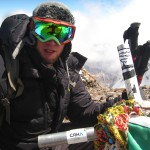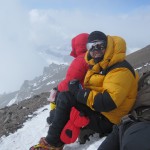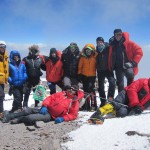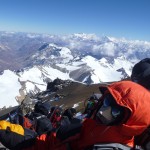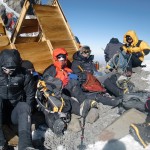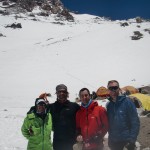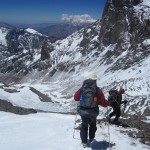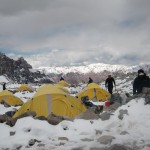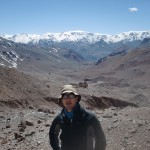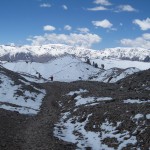Aconcagua is the highest mountain in the Western and Southern Hemispheres at 6,962 metres (22,841 ft). It is located in the Andes mountain range, in the province of Mendoza, Argentina, and lies 112 kilometres (70 mi) northwest of its capital, the city of Mendoza. The summit is also located 15 kilometres from the international border with Chile.
The mountain was created by the subduction of the Nazca Plate beneath the South American plate during the geologically recent Andean orogeny; but it is not a volcano. The first attempt to reach the summit of Aconcagua by a European was made in 1883 by a party led by the German geologist and explorer Paul Güssfeldt. Bribing porters with the story of treasure on the mountain, he approached the mountain via the Rio Volcan, making two attempts on the peak by the north-west ridge and reaching an altitude of 6,500 metres (21,300 ft). The route that he prospected is now the normal route up the mountain.
The first recorded ascent was in 1897 by a British expedition led by Edward FitzGerald. The summit was reached by the Swiss guide Matthias Zurbriggen on January 14 and by two other expedition members a few days later.

Argentina/Chile border
6962m / 22,841ft
Normal Route
$10,000.00 (2008 + 2011)
17 days
Completed Dec 2011
Those who were able to summit Kilimanjaro or Elbrus without prior experience or serious training most likely won’t have the same luck on Aconcagua. Being in good shape alone is not enough, and a dedicated training program for the mountain is required for most climbers to reach the summit. The demands of a long expedition (20 days), carrying heavy packs, extreme altitude, and the cold and violent windstorms come as a shock to many.
Consequently, approximately 70% of all climbers who attempt Aconcagua fail to summit. From our larger expedition team of 18 climbers, 7 made it to the summit in December 2011 and many were exhausted on the summit. This had been one of our toughest mountain experience to that point, and the 14-hour summit day is a significant physical challenge. Do not underestimate the significant altitude impact during this climb.














